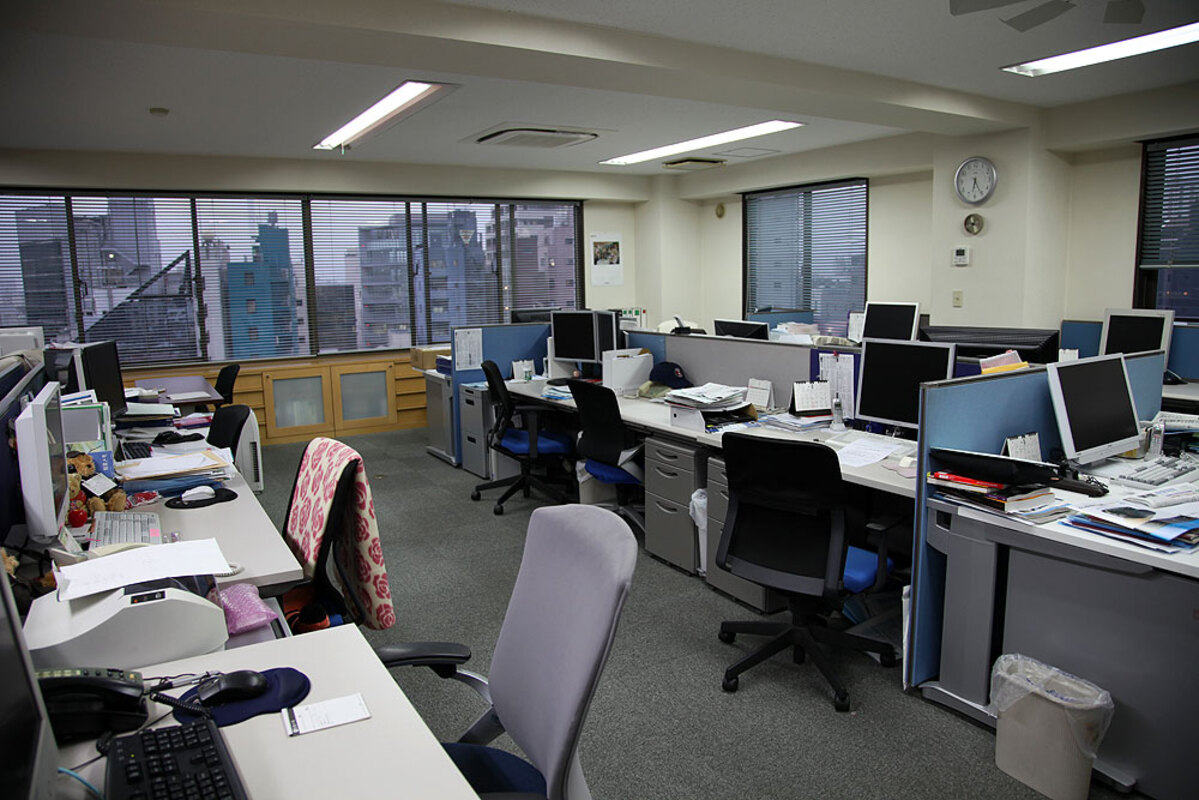Changes in work environment due to remote work
Do we still need an office? Recently this kind of discussion gets lively everywhere because remote work becomes common due to the COVID. The anti-office people are arguing there’re many advantages: productivity improvement by concentration improvement; more effective use of time by no commuting; stress-free from relationships at work. Before the COVID, I had a lot of business trips and was rarely in the office. Funnily enough, I once worked almost remotely but now work here in the office, against the times. Let me share what I, unfamiliar with working in the office for a long time, think about the discussion.
The basic rules of typical Japanese offices
In the first place, I think I should explain something more about the basic rules of typical Japanese offices. Commonly executive desks are positioned at the window, closely facing to their team members. Private rooms are so rare, only permitted for big bosses if space permits. In most cases, partitions are put in between desks, but they are too small to protect privacy. It can be said to be an open-space community, to put it better; a prison under mutual surveillance in reality (from my point of view). I may sound too critical like having some trouble in relationships at work. It might be true but is not the point here.
The point I want to emphasize is Japanese offices are full of distractions. Picture that—the phone is always ringing somewhere; people are talking loudly around your desk; someone even talks to you by throwing a meaningless question like “Do you have a minute?” I want to say this out loud. What’s the point of this kind of question? This kind of talk never ends in a minute in most cases, and our minute has already started to be wasted to answer the question.


This will be a new standard for the Japanese office, hopefully!
Having complained a lot about working in the office, I didn’t mean to completely deny it. During the COVID, I’m keenly aware of the importance of human relationships with others. Loneliness is a deadly disease, which leads me to the conclusion: we need to work in the office in order to avoid loneliness, but keeping a reasonable distance between colleagues is also important for a good office environment.
Today, I have a good solution for you. The above images are of our Tokyo office. My favorite part is its diversity: you can be alone and absorb yourself in something in the semi-private areas with some partitions; you can communicate closely with colleagues in the other areas when feeling lonely to death. The problem is the headquarters office where I’m working is a typical Japanese office, totally different from the Tokyo office.
Photo Credit: https://www.bulsuk.com/2016/05/working-for-japanese-company-challenges.html

Shungo Ijima
He is travelling around the world. His passion is to explain Japan to the world, from the unique viewpoint accumulated through his career: overseas posting, MBA holder, former official of the Ministry of Finance.

